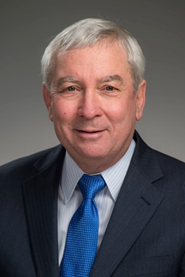From the President of I-INCE (Dec 2020): INTER-NOISE Congresses—Looking Back and Looking Forward
We have had a chance now to close the door on INTER-NOISE 2020, including surveying the registrants to get their feedback about INTER-NOISE 2020 as a virtual congress. First, let me emphasize my gratitude on behalf of I-INCE for the tremendous job that the INTER-NOISE 2020 organizing committee and Korean Society for Noise and Vibration Engineering (KSNVE) did to pivot from an in-person format to a virtual format in just three months (or so). The risks they took on and the high-quality outcome were a result of much hard work and talent. The noise control engineering community owes them a tremendous debt of gratitude.
In the end, INTER-NOISE 2020 ended up with 648 papers. Of these, 474 were presented as recorded oral presentations and 169 as posters. Of the oral paper presentations, 108 were part of live virtual sessions. The congress attracted 868 registrants, including 327 students. The overall registrant numbers are pretty typical of recent congresses, but the mix, particularly the high number of student registrants, is unusual. Perhaps this is an indicator of the desirability of an online format for students who might otherwise not be able to attend due to travel costs. There were almost 30,000 views of the recorded presentations and 2,000 exhibit visits of more than five minutes. Given all of the challenges, short timelines, and lack of any best-practice models to follow, INTER-NOISE 2020 was a great success. My only disappointments are not being able to see all of you and not visiting the vibrant city of Seoul.
The I-INCE Board, led by President-Elect Luigi Maffei, has completed a survey of the registrants of INTER-NOISE 2020. The main findings of the survey are that there are participants who prefer the in-person format and others who prefer the online format. Future congresses will have to consider how they can combine the benefits of the networking and knowledge transfer that happen at in-person congresses with the convenience and low cost of virtual congresses. These challenges are increased for a global congress where the participants are distributed across many time zones. We learned a great deal from INTER-NOISE 2020 that will be useful in the future. I suspect that congresses will be changed for the long term. The bottom line, though, is that the success of future congresses will depend very much on the willingness of contributors to participate in a high-quality manner. We still have more experiments to conduct and more to learn.
Looking forward, INTER-NOISE 2021 will be the 50th INTER-NOISE Congress. The intention is to celebrate our beginnings in 1972 in Washington, DC, and to look forward. The congress will both include historical perspectives of the first INTER-NOISE Congress and look forward. The theme of the congress will be “Next 50 Years of Noise Control.” The congress will be held on August 1–4, 2021. Given the continued uncertainty of the pandemic and accompanying travel restrictions, the INTER-NOISE 2021 Congress Organizing Committee has recently announced that the congress is planning to have both in-person and online components—essentially a hybrid congress. They are using the feedback gathered from INTER-NOISE 2020 registrants and best practices adopted from other congresses to plan the logistics. You will see announcements about INTER-NOISE 2021 soon, if you have not already. I hope you will pass along your suggestions of how to make the hybrid congress format a success. I also hope you will plan to participate either online or in person. It should be great fun to look back 50 years and look forward 50 years.
Let me close with my best wishes and hope that you will all stay safe and healthy in 2021.
Bob Bernhard
President, I-INCE

